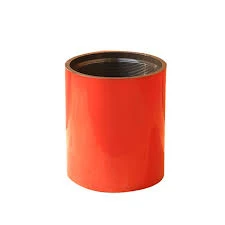- Afrikaans
- Albanian
- Amharic
- Arabic
- Armenian
- Azerbaijani
- Basque
- Belarusian
- Bengali
- Bosnian
- Bulgarian
- Catalan
- Cebuano
- Corsican
- Croatian
- Czech
- Danish
- Dutch
- English
- Esperanto
- Estonian
- Finnish
- French
- Frisian
- Galician
- Georgian
- German
- Greek
- Gujarati
- Haitian Creole
- hausa
- hawaiian
- Hebrew
- Hindi
- Miao
- Hungarian
- Icelandic
- igbo
- Indonesian
- irish
- Italian
- Japanese
- Javanese
- Kannada
- kazakh
- Khmer
- Rwandese
- Korean
- Kurdish
- Kyrgyz
- Lao
- Latin
- Latvian
- Lithuanian
- Luxembourgish
- Macedonian
- Malgashi
- Malay
- Malayalam
- Maltese
- Maori
- Marathi
- Mongolian
- Myanmar
- Nepali
- Norwegian
- Norwegian
- Occitan
- Pashto
- Persian
- Polish
- Portuguese
- Punjabi
- Romanian
- Russian
- Samoan
- Scottish Gaelic
- Serbian
- Sesotho
- Shona
- Sindhi
- Sinhala
- Slovak
- Slovenian
- Somali
- Spanish
- Sundanese
- Swahili
- Swedish
- Tagalog
- Tajik
- Tamil
- Tatar
- Telugu
- Thai
- Turkish
- Turkmen
- Ukrainian
- Urdu
- Uighur
- Uzbek
- Vietnamese
- Welsh
- Bantu
- Yiddish
- Yoruba
- Zulu
Specifications and Dimensions for Casing and Coupling Components in Oil and Gas Industry
Casing coupling dimensions are a critical aspect of the oil and gas industry, particularly in the construction and integrity of wellbore systems. Casing is a series of pipes that are inserted into a drilled well to provide structural support and maintain the integrity of the borehole. Couplings are the fittings that connect these casing pipes, ensuring a secure and leak-proof assembly. The dimensions of both casings and couplings are crucial for the efficiency, safety, and effectiveness of drilling operations.
When discussing casing, it is essential to recognize that it comes in various sizes and grades, each tailored for specific applications and pressures encountered during drilling operations. The standards for casing dimensions are predominantly set by organizations such as the American Petroleum Institute (API), which lays out specifications for different casing types, including surface casing, intermediate casing, and production casing. These specifications include outside diameters (OD), wall thicknesses, lengths, and the grade of the material used. Common sizes for casing can range from 4.5 inches to 20 inches in diameter, with varying wall thicknesses depending on the pressure requirements of the well.
Couplings, on the other hand, serve as connectors between casing pipes and also come in various sizes and designs. The dimensions of couplings must match the outer diameter of the casing pipes they are designed to connect. Typically, couplings are manufactured to be a few inches long, providing a snug fit to minimize the risk of leakage at the joints. Thread types, such as API round threads or buttress threads, play a vital role in ensuring the strength and integrity of the connections. The threading must be accurate to prevent any operational failures during drilling or production phases.
In addition to the mechanical properties, the dimensions and quality of casing and couplings significantly influence the overall performance of the well. For instance, if the casing is too thin for a particular pressure environment, it may fail, leading to catastrophic events such as blowouts or loss of well integrity. Similarly, improperly sized or low-quality couplings can lead to improper seals, which may result in leaks of hydrocarbons. This not only poses a risk to the environment but also endangers the safety of personnel working at the site.
casing coupling dimensions

Thus, the interplay between casing and coupling dimensions is a subject of continuous research and development. Advances in technology are leading to the creation of specialized casings and couplings that can withstand more extreme conditions, including higher pressures and corrosive environments. For instance, composite materials and advanced alloys are being explored as alternatives to traditional steel, providing enhanced strength and resistance to corrosion while also reducing weight.
It is also important to note that the casing and coupling dimensions need to be considered during the planning and design phases of drilling operations. Proper engineering assessments must evaluate the anticipated conditions, including pressure, temperature, and the geological environment, to select appropriate casing sizes and coupling types. This underscores the importance of collaboration among geologists, engineers, and drilling teams to ensure an optimal selection that guarantees the safety and productivity of the wellbore.
In conclusion, casing coupling dimensions are vital in the oil and gas drilling industry, reflecting the complexities and critical nature of well construction. Understanding these dimensions not only ensures compliance with industry standards but also enhances the safety and efficiency of drilling operations. As technologies evolve, ongoing improvements in materials and design will continue to shape the future of well construction, aiming for safer and more effective hydrocarbon extraction processes.
-
Well Casing Extension Couplings – Applications and InstallationNewsJun.06,2025
-
Types of Crossover Subs in Drilling & CompletionNewsJun.06,2025
-
Key Features of High-Quality Tubing Pup JointsNewsJun.06,2025
-
Installation and Maintenance Tips for Steel Couplings for PipeNewsJun.06,2025
-
How to Select the Right Pup Joint for Oil & Gas OperationsNewsJun.06,2025
-
Applications of Stainless Steel Pipe CouplingsNewsJun.06,2025







